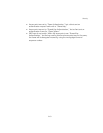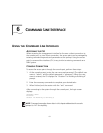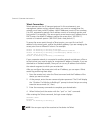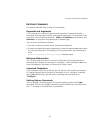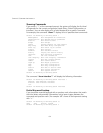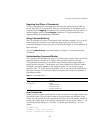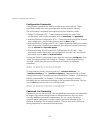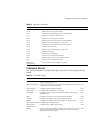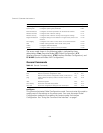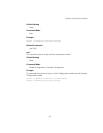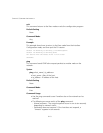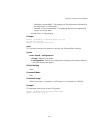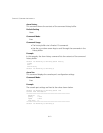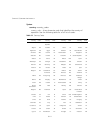
6-7
Using the Command Line Interface
Table 8 Keystroke Commands
COMMAND GROUPS
The system commands can be broken down into the functional groups shown
below.
Table 9 Command Groups
Keystroke Function
Ctrl-A Shifts cursor to start of command line.
Ctrl-B Shifts cursor to the left one character.
Ctrl-C Terminates a task and displays the command prompt.
Ctrl-E Shifts cursor to end of command line.
Ctrl-F Shifts cursor to the right one character.
Ctrl-K Deletes from cursor to the end of the command line.
Ctrl-L Repeats current command line on a new line.
Ctrl-N Enters the next command line in the history buffer.
Ctrl-P Shows the last command.
Ctrl-R Repeats current command line on a new line.
Ctrl-U Deletes the entire line.
Ctrl-W Deletes the last word typed.
Esc-B Moves the cursor backward one word.
Esc-D Deletes from the cursor to the end of the word.
Esc-F Moves the cursor forward one word.
Delete key or
backspace
key
Erases a mistake when entering a command.
Command Group Description Page
General Basic commands for entering configuration mode, restarting the
system, or quitting the CLI
6-8
System Management Controls user name, password, web browser management options, and
a variety of other system information
6-13
System Logging Configures system logging parameters 6-32
System Clock Configures SNTP and system clock settings 6-37
DHCP Relay Configures the access point to send DHCP requests from clients to
specified servers
6-42
SNMP Configures community access strings and trap managers 6-44
Flash/File Manages code image or access point configuration files 6-61
RADIUS Configures the RADIUS client used with 802.1X authentication 6-65
802.1X Authentication Configures 802.1X authentication 6-71
MAC Address
Authentication
Configures MAC address authentication 6-78
Filtering Filters communications between wireless clients, controls access to the
management interface from wireless clients, and filters traffic using
specific Ethernet protocol types
6-82



